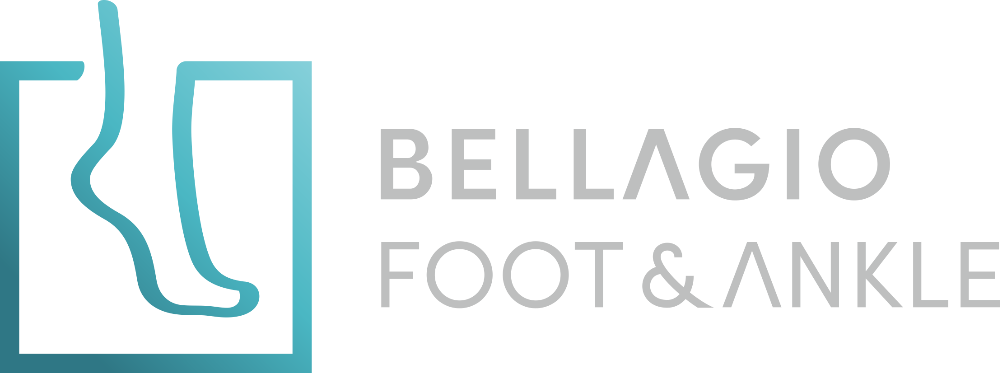For many, one of the small pleasures of home is the freedom to kick off your shoes and walk barefoot. There’s a sense of ease and relaxation that comes with stepping onto the cool tile or soft carpet after a long day. And with so much time spent indoors—especially in recent years—it’s easy to understand why going barefoot has become second nature in our homes. But while walking around barefoot may seem harmless, or even healthy, the truth is that consistent barefoot living can lead to a variety of foot problems, especially when done on hard, unsupportive surfaces. The comfort you feel in the moment may be masking a long-term toll on your foot structure, stability, and overall health.
Our feet were originally designed for walking on natural, varied terrain—grass, dirt, sand—not flat, rigid surfaces like tile, hardwood, laminate, or concrete. These modern flooring materials do not provide the kind of shock absorption and adaptability your foot needs for each step. When you walk barefoot on these unforgiving floors for hours a day, your body absorbs more impact through the heels, arches, and toes. Over time, that repeated pressure can strain the plantar fascia—the thick band of tissue on the bottom of your foot—leading to inflammation, heel pain, or plantar fasciitis. The same applies to the Achilles tendon and other supporting structures that take the brunt of your weight with each step.
People with flat feet or high arches are especially vulnerable. Without the support of a properly structured shoe or insole, the foot can collapse inward (overpronation) or bear excessive pressure on the outer edge (supination). This leads not only to foot fatigue but also to ankle instability and misalignment that can affect your knees, hips, and lower back. Even those without known foot issues may start to notice discomfort when standing for long periods in the kitchen, doing chores, or simply pacing the house. That subtle aching or stiffness that creeps in at the end of the day could be your feet telling you they need support.
Some proponents of barefoot walking argue that it helps strengthen the intrinsic muscles of the feet and encourages a more natural gait. While there’s some truth to this in certain controlled conditions—such as walking on grass or using minimalist footwear with proper guidance—unstructured barefoot walking at home doesn’t provide the same benefits. In fact, it often encourages bad habits, like clawing the toes for grip on slippery floors, or collapsing the arches due to fatigue. These patterns, repeated daily, reinforce dysfunction rather than strength.
There’s also the risk of injury. Stubbed toes, splinters, dropped objects, and slips are far more common when walking barefoot. For individuals with diabetes or poor circulation, the stakes are even higher. A small cut or puncture wound may go unnoticed and lead to serious infection or ulceration. Even healthy individuals can suffer from delayed healing when a barefoot injury isn’t addressed promptly.
So what’s the solution? It doesn’t mean you have to lace up your sneakers from sunrise to sunset. But introducing supportive indoor footwear can make a significant difference. Shoes or slippers with arch support, a cushioned sole, and a proper fit can protect your feet while still allowing for comfort. Choose footwear designed specifically for indoor use—lightweight, breathable, and easy to slip on and off—so you’re more likely to make them part of your routine. Avoid flat, flimsy slippers or barefoot-style socks that offer no structural support.
Foot care doesn’t stop at footwear, either. Maintaining a regular stretching and strengthening routine can counteract the effects of prolonged barefoot walking. Rolling your foot over a small massage ball, stretching your calves, and doing simple toe exercises can help restore flexibility and prevent tightness in the plantar fascia. If you’re already dealing with discomfort or stiffness, icing your arches or heels at the end of the day can offer relief. And if pain persists, it’s a sign that your feet need professional attention.
At Bellagio Foot & Ankle, we often see patients who are surprised to learn that their home habits are contributing to their foot pain. They may come in with recurring heel pain, unexplained arch fatigue, or chronic soreness in their toes and ankles—only to realize that walking barefoot for hours each day on hard floors is the root cause. Through detailed evaluations, custom orthotics, and practical lifestyle adjustments, we help patients make simple changes that deliver significant results.
The truth is, our homes are not the natural environment our feet evolved to thrive in. Soft, uneven, and forgiving surfaces have been replaced by hard flooring that demands more from our feet than they were built to handle unaided. It’s not about giving up the pleasure of comfort—it’s about finding the balance between freedom and support, relaxation and structure. Your feet can absolutely feel at home, but they shouldn’t be left unprotected.
Before you take your next barefoot stroll from the couch to the kitchen, consider what your feet are experiencing with each step. Listen to the signals—tension, tightness, soreness—and don’t wait for a serious issue to develop before taking action. With a few mindful adjustments, your at-home habits can support your foot health instead of undermining it.
Feeling the Effects of Barefoot Living?
If you’re experiencing unexplained foot pain, heel stiffness, or arch fatigue, it could be linked to your barefoot habits. Call 480-717-5011 or visit our website to schedule a consultation with Bellagio Foot & Ankle and take the first step toward better comfort at home.
Schedule a Consultation
Fill out the form below to schedule an appointment. We do our best to contact you within 24-48 hours. Thank you!
For many, one of the small pleasures of home is the freedom to kick off your shoes and walk barefoot. There’s a sense of ease and relaxation that comes with stepping onto the cool tile or soft carpet after a long day. And with so much time spent indoors—especially in recent years—it’s easy to understand why going barefoot has become second nature in our homes. But while walking around barefoot may seem harmless, or even healthy, the truth is that consistent barefoot living can lead to a variety of foot problems, especially when done on hard, unsupportive surfaces. The comfort you feel in the moment may be masking a long-term toll on your foot structure, stability, and overall health.
Our feet were originally designed for walking on natural, varied terrain—grass, dirt, sand—not flat, rigid surfaces like tile, hardwood, laminate, or concrete. These modern flooring materials do not provide the kind of shock absorption and adaptability your foot needs for each step. When you walk barefoot on these unforgiving floors for hours a day, your body absorbs more impact through the heels, arches, and toes. Over time, that repeated pressure can strain the plantar fascia—the thick band of tissue on the bottom of your foot—leading to inflammation, heel pain, or plantar fasciitis. The same applies to the Achilles tendon and other supporting structures that take the brunt of your weight with each step.
People with flat feet or high arches are especially vulnerable. Without the support of a properly structured shoe or insole, the foot can collapse inward (overpronation) or bear excessive pressure on the outer edge (supination). This leads not only to foot fatigue but also to ankle instability and misalignment that can affect your knees, hips, and lower back. Even those without known foot issues may start to notice discomfort when standing for long periods in the kitchen, doing chores, or simply pacing the house. That subtle aching or stiffness that creeps in at the end of the day could be your feet telling you they need support.
Some proponents of barefoot walking argue that it helps strengthen the intrinsic muscles of the feet and encourages a more natural gait. While there’s some truth to this in certain controlled conditions—such as walking on grass or using minimalist footwear with proper guidance—unstructured barefoot walking at home doesn’t provide the same benefits. In fact, it often encourages bad habits, like clawing the toes for grip on slippery floors, or collapsing the arches due to fatigue. These patterns, repeated daily, reinforce dysfunction rather than strength.
There’s also the risk of injury. Stubbed toes, splinters, dropped objects, and slips are far more common when walking barefoot. For individuals with diabetes or poor circulation, the stakes are even higher. A small cut or puncture wound may go unnoticed and lead to serious infection or ulceration. Even healthy individuals can suffer from delayed healing when a barefoot injury isn’t addressed promptly.
So what’s the solution? It doesn’t mean you have to lace up your sneakers from sunrise to sunset. But introducing supportive indoor footwear can make a significant difference. Shoes or slippers with arch support, a cushioned sole, and a proper fit can protect your feet while still allowing for comfort. Choose footwear designed specifically for indoor use—lightweight, breathable, and easy to slip on and off—so you’re more likely to make them part of your routine. Avoid flat, flimsy slippers or barefoot-style socks that offer no structural support.
Foot care doesn’t stop at footwear, either. Maintaining a regular stretching and strengthening routine can counteract the effects of prolonged barefoot walking. Rolling your foot over a small massage ball, stretching your calves, and doing simple toe exercises can help restore flexibility and prevent tightness in the plantar fascia. If you’re already dealing with discomfort or stiffness, icing your arches or heels at the end of the day can offer relief. And if pain persists, it’s a sign that your feet need professional attention.
At Bellagio Foot & Ankle, we often see patients who are surprised to learn that their home habits are contributing to their foot pain. They may come in with recurring heel pain, unexplained arch fatigue, or chronic soreness in their toes and ankles—only to realize that walking barefoot for hours each day on hard floors is the root cause. Through detailed evaluations, custom orthotics, and practical lifestyle adjustments, we help patients make simple changes that deliver significant results.
The truth is, our homes are not the natural environment our feet evolved to thrive in. Soft, uneven, and forgiving surfaces have been replaced by hard flooring that demands more from our feet than they were built to handle unaided. It’s not about giving up the pleasure of comfort—it’s about finding the balance between freedom and support, relaxation and structure. Your feet can absolutely feel at home, but they shouldn’t be left unprotected.
Before you take your next barefoot stroll from the couch to the kitchen, consider what your feet are experiencing with each step. Listen to the signals—tension, tightness, soreness—and don’t wait for a serious issue to develop before taking action. With a few mindful adjustments, your at-home habits can support your foot health instead of undermining it.
Feeling the Effects of Barefoot Living?
If you’re experiencing unexplained foot pain, heel stiffness, or arch fatigue, it could be linked to your barefoot habits. Call 480-717-5011 or visit our website to schedule a consultation with Bellagio Foot & Ankle and take the first step toward better comfort at home.


